New York City Garden Ideas: Transform Your Urban Space
Gardening in New York City offers unique opportunities despite its urban landscape. Whether you live in an apartment, have access to a terrace, or are exploring public parks, there’s plenty of inspiration to turn your green space into a personal oasis. What are the best ways to transform your city garden into a lush, vibrant getaway?

From balcony gardens to community green spaces, there’s something for every gardener in the city. You’ll find plenty of ideas that cater to limited spaces, enabling you to create a beautiful and functional garden. Exploring these options can bring a touch of nature into your daily urban life.
1) Elevated Herb Garden on Rooftop

Imagine stepping outside and having fresh basil, mint, and rosemary right at your fingertips. A rooftop herb garden is not only practical, but it can also be an inviting retreat from busy city life.
Elevate wooden or metal planters to waist height for easy access. Make sure they have proper drainage and are filled with nutrient-rich soil. Use vertical space by installing shelves or trellises for climbing herbs.
For inspiration, check out this amazing rooftop oasis in Manhattan. You can create a similar haven with a little planning and creativity.
2) Vertical Plant Wall with Herbs

A vertical plant wall with herbs is a fantastic way to use limited space in New York City.
You can create this by attaching planters to a wooden slat wall or fence.
Use herbs like basil, mint, and thyme, which are not only fragrant but also useful in your kitchen.
This setup not only maximizes space but also adds a green, vibrant touch to your home.
For an eco-friendly option, repurpose old water bottles as herb planters. This is a cost-effective way to start your vertical garden and helps reduce waste.
With a vertical herb garden, you have fresh ingredients right at your hand.
Create a pleasant green space that you can enjoy daily.
3) Community Garden with Local Plants

Creating a community garden with local plants in New York City is a wonderful idea. These plants are well-suited to the local climate and require less maintenance. By choosing native species, you support local wildlife and promote biodiversity.
Native plants like Eastern Redbud and Common Milkweed thrive well. You can discover more about such gardens through GreenThumb Community Gardens.
Engaging in such projects brings the community together and creates beautiful, sustainable green spaces.
4) Terraced Vegetable Garden
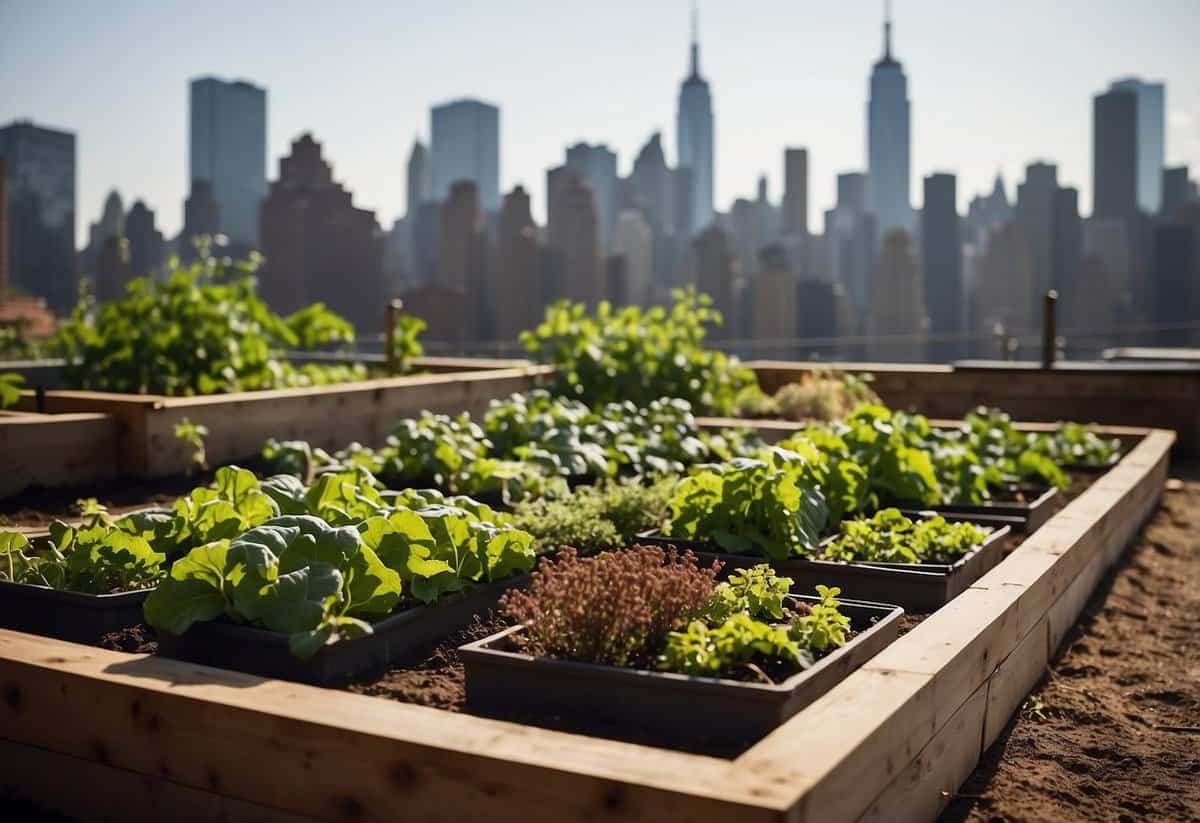
Creating a terraced vegetable garden in New York City can maximize your small outdoor space. By using a tiered approach, you can grow a variety of vegetables even on a small balcony or rooftop.
Use planter boxes to create levels, allowing different plants to get the sunlight they need. Consider planting tomatoes, peppers, and herbs for an easy start. For more ideas, check out this Manhattan Terrace Design.
Terraced gardens are functional and beautiful, bringing a touch of green to your urban living.
5) Urban Orchard with Fruit Trees
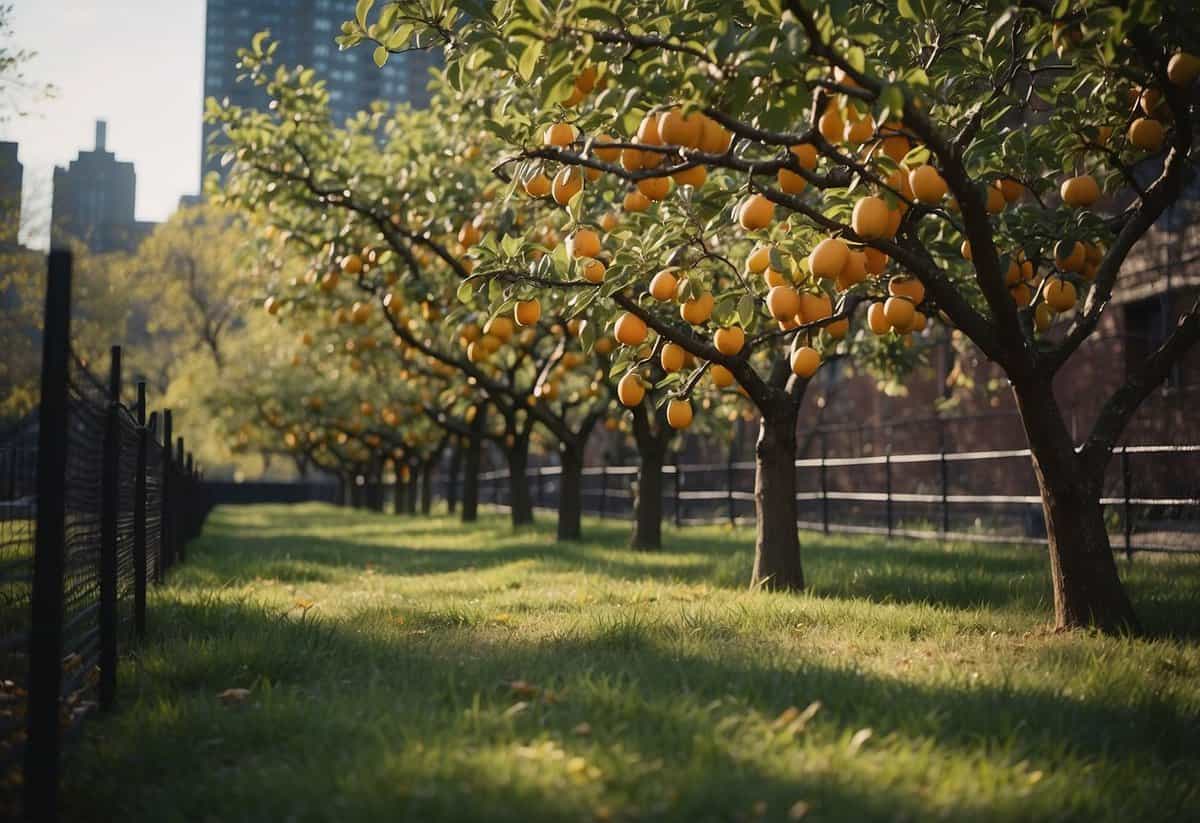
Thinking about adding some fruit trees to your urban garden? You can make that dream come true even in a small space!
Consider planting dwarf varieties that take up less room but still produce plenty of fruit. Options like apple, peach, and pear trees are perfect for urban settings.
If you have a little more space, you might try growing less common trees, such as kiwi vines or pineapple guava, which add a unique touch to your garden. For more ideas, check out these urban orchard tips.
Creating an urban orchard not only gives you fresh fruit but also enhances your garden’s aesthetic with beautiful blossoms in the spring.
6) Eco-Friendly Rain Garden

You can create an eco-friendly rain garden in your New York City space by using native plants. These plants can handle wet conditions and thrive with minimal care. Check out options like Gowanus Nursery and Fort Pond Native Plants for good choices. For inspiration, visit Todd Haiman Landscape Design.
Incorporate features like small ponds or water features to manage rainwater. Ideas from Epic Gardening suggest adding smooth rocks and natural elements to make it even more relaxing.
7) Butterfly and Pollinator Gardens
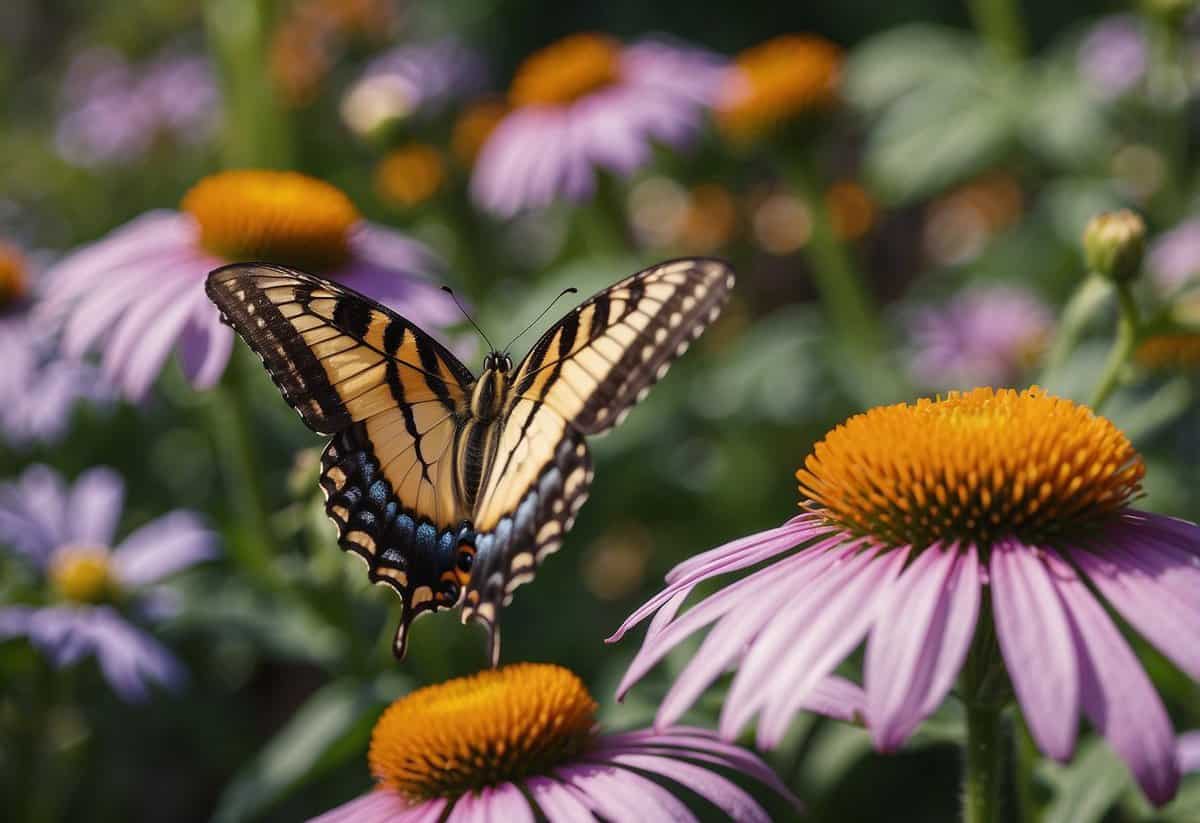
Butterfly and pollinator gardens bring color and life to your space. These gardens attract bees, butterflies, and other pollinators. By planting native plants, you offer crucial support to these species.
Consider visiting Pollinator Place Gardens in New York City. Locations like Mullaly Park and McCarren Park showcase the beauty and importance of pollinator-friendly plants.
Adding a water feature, like a birdbath, can make your garden even more inviting to butterflies as they enjoy basking in the sun.
8) Recycled Container Gardens
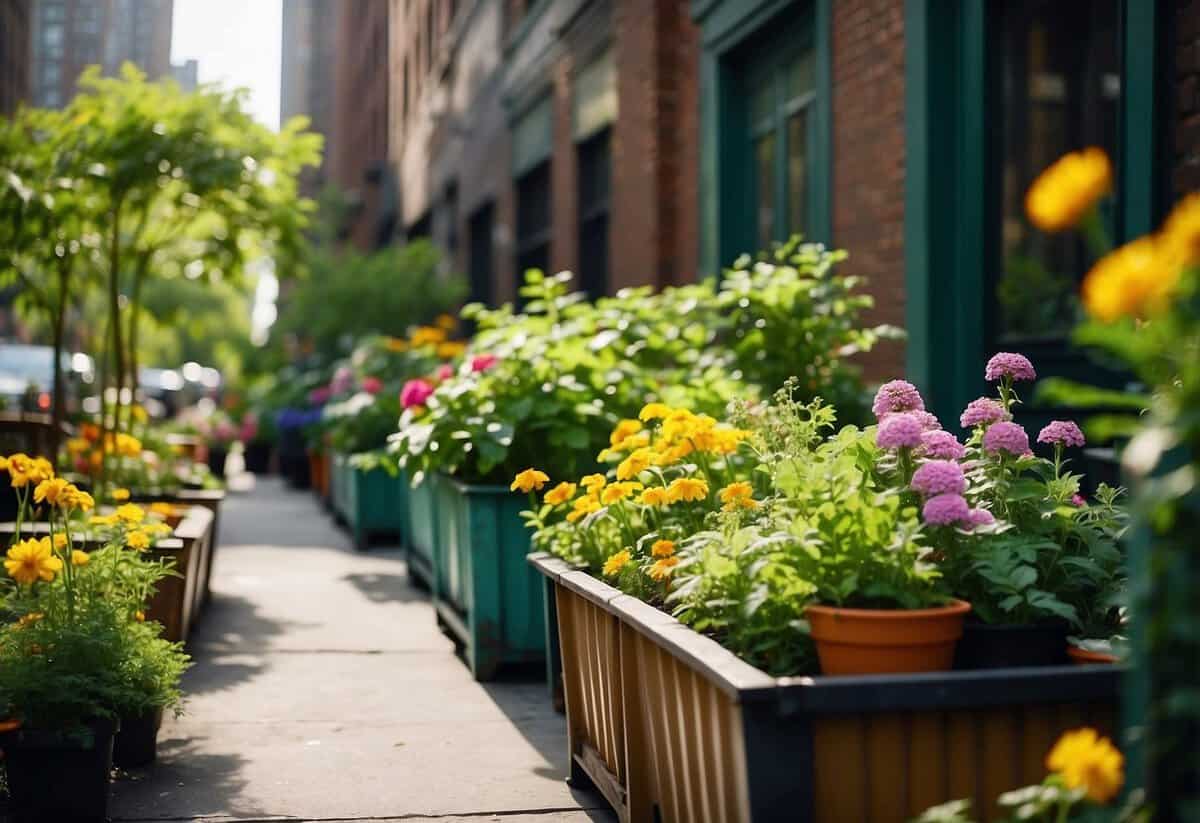
Using recycled materials for your garden containers is eco-friendly and creative. Old pallets can be painted and propped up to create vertical garden space for vegetables. They’re easy to move and store.
Consider using items like old kettles or large tins. These offer good drainage and can be quirky accents to your garden. Recycling these items helps reduce waste while adding charm.
Even old furniture pieces like drawers or bookshelves can be converted into plant holders. Just ensure they have proper holes for water drainage.
Experimenting with different recycled items can make your garden stand out and feel unique.
9) Garden Path with Native Stones
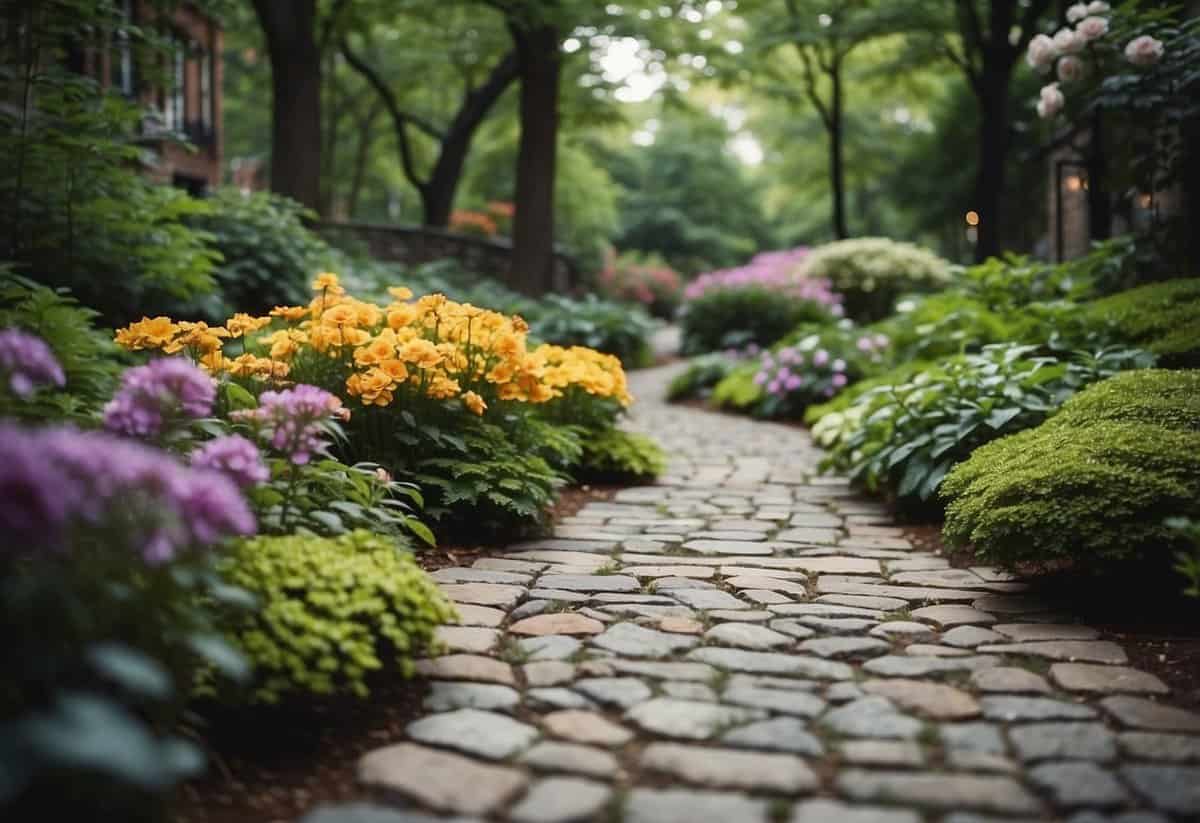
Creating a garden path with native stones can add a natural look to your yard. Using stones that are local to your area helps the path blend in with the surrounding landscape.
Choose stones that are durable and can withstand your local weather. This ensures your path will last a long time.
A classic stone walkway can be a charming addition to your garden. The natural stones provide a beautiful look that is both functional and attractive.
10) Zen Garden with Japanese Maples
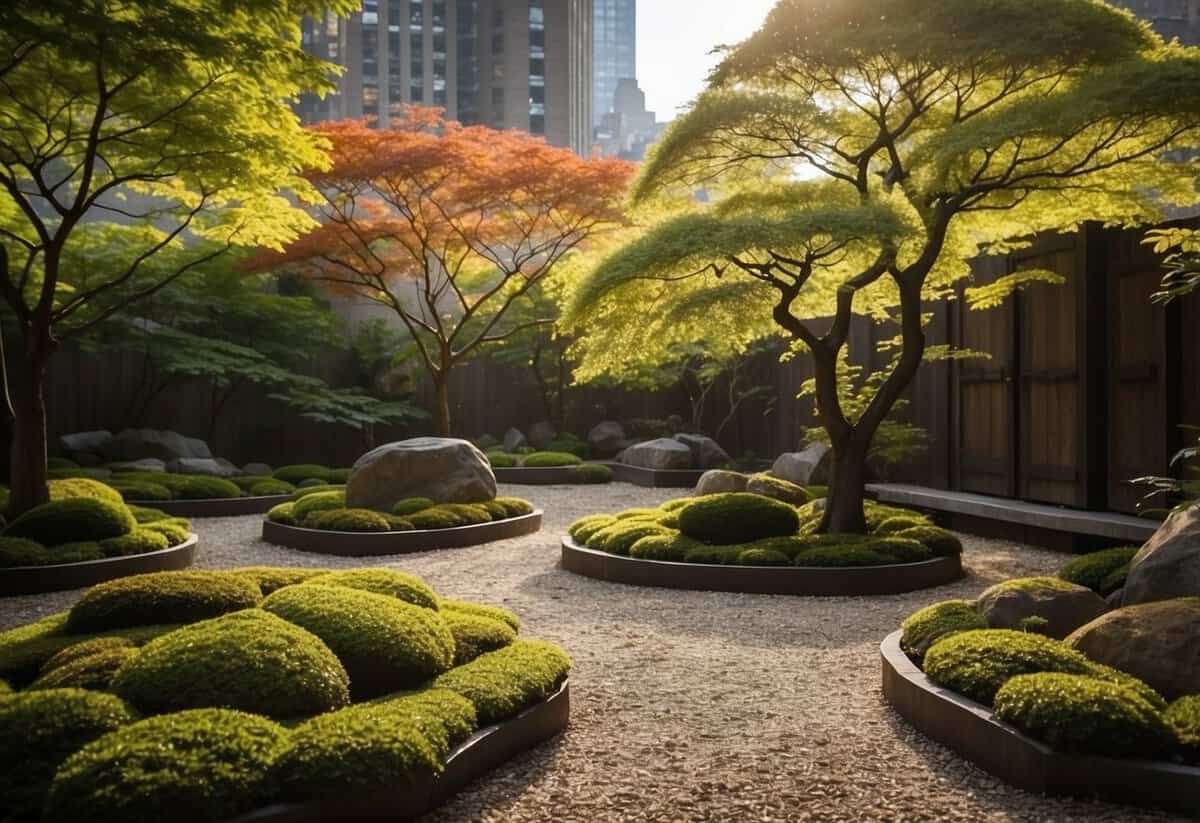
A Zen garden in New York City can be a tranquil escape right in your backyard. Using Japanese maples, also known as acers, can really bring out the beauty in your Zen space.
Japanese maples have vibrant leaves that change color throughout the seasons, adding a dynamic element to your garden. They thrive in shady, sheltered spots, perfect for the city’s environment.
Consider surrounding your Japanese maples with pebbles to enhance the calming atmosphere. A small, simple water feature can also add to the peaceful vibe of your Zen garden.
Importance Of Urban Gardening
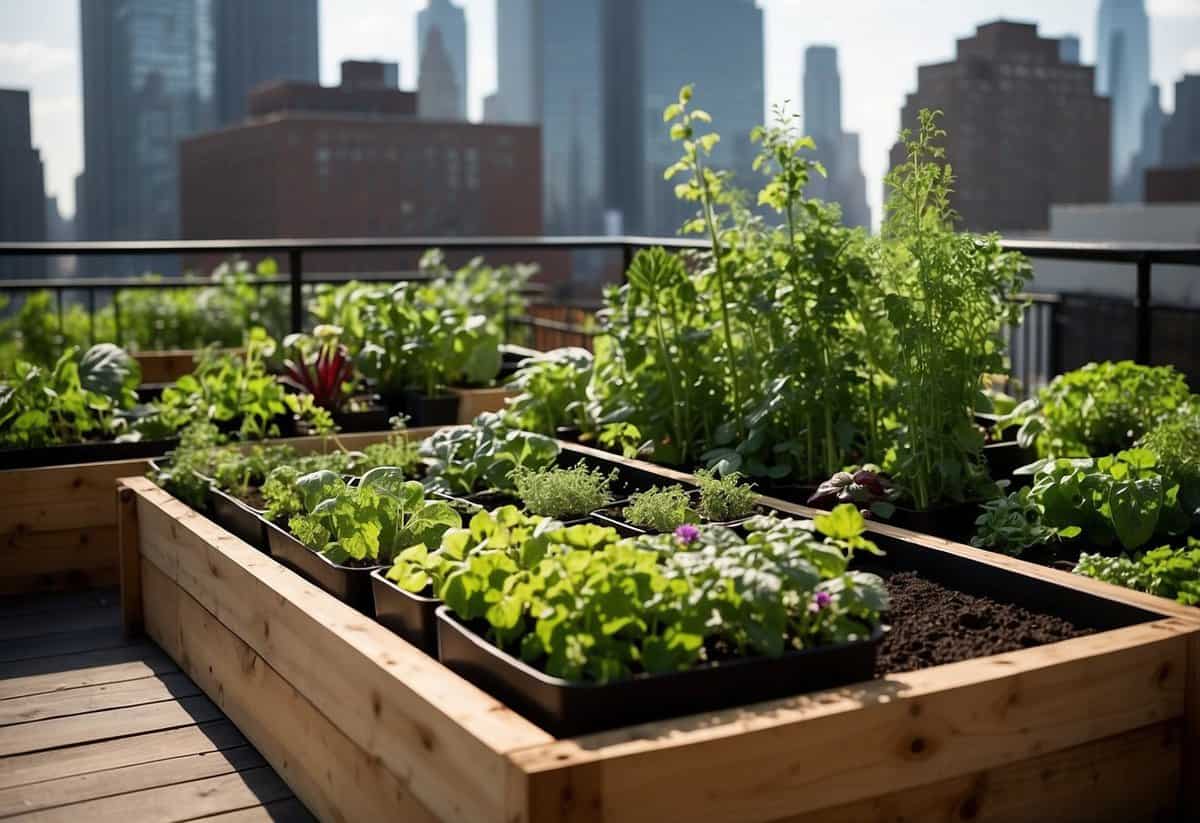
Urban gardening offers numerous benefits, such as improving mental health, enhancing biodiversity, and fostering community connections. These gardens are small but mighty in making a significant impact on urban life.
Benefits For Mental Health
Urban gardening is great for mental health. Spending time in green spaces can reduce stress and anxiety. When you engage in gardening, your body releases endorphins, which are natural mood lifters.
Tending to plants gives you a sense of purpose and achievement. It can be especially beneficial when life feels overwhelming. Plus, regular gardening can be a form of gentle exercise, keeping you physically active and mentally refreshed.
Gardening also promotes mindfulness. Focusing on the task at hand, such as planting or weeding, helps you stay present. It’s a great way to escape the hustle and bustle of city life and enjoy some peaceful moments.
Enhancing Biodiversity
Urban gardens can boost local biodiversity. By growing different types of plants, you attract various species of insects, birds, and other wildlife. This creates a small but rich ecosystem in the heart of the city.
For instance, planting native flowers and herbs can attract bees and butterflies. These pollinators are crucial for maintaining healthy plant life. Including a variety of plants helps support different stages of wildlife life cycles.
Moreover, urban gardens can help combat the urban heat island effect. Plants provide shade and release moisture into the air, cooling down the surrounding area. This makes your city neighborhood more comfortable and sustainable.
Community Building
Urban gardening also brings people together. Community gardens are shared spaces where neighbors can meet, collaborate, and build relationships. Working side by side with others fosters a sense of community and belonging.
You can share gardening tips, seeds, and even harvests with your neighbors. These interactions can lead to stronger, more connected neighborhoods. Plus, community gardens often host events and workshops that provide educational opportunities for people of all ages.
Sharing a common goal, like growing fresh produce, brings diverse groups of people together. It creates a sense of ownership and pride in the community, making urban areas more vibrant and inclusive.
Designing A City Garden

You can create a beautiful garden in the heart of New York City even if you have limited space. Focus on maximizing small areas, choosing suitable plants for your environment, and incorporating vertical gardening solutions to make the most of your city garden.
Maximizing Small Spaces
Urban gardens often have limited space, so you need to make every inch count. Use containers and raised beds to organize your plants. For example, a container garden can work wonders on a small balcony or rooftop. Arrange plants of different heights and sizes to create depth and interest.
Consider using furniture that doubles as storage to keep your garden tools handy yet out of sight. A foldable table or stackable chairs can give you more room when needed. Reflective surfaces such as mirrors can make a small garden appear more spacious by bouncing light around.
Choosing The Right Plants
Selecting plants that thrive in your environment is crucial. Many city gardens have shady spots, so plants that can grow in low light, like ferns and hostas, are ideal. Check the City gardens: Design ideas and tips for a small yard for advice on selecting climate-appropriate plants.
For sunny spots, consider drought-tolerant plants like succulents and herbs. Ensure you group plants with similar water and sunlight needs to make maintenance easier. Colorful annuals and perennials can add a burst of color to your green space, making it vibrant and appealing.
Incorporating Vertical Gardens
When horizontal space is limited, go vertical. Vertical gardens use walls or structures to grow plants upwards, which saves ground space. Hanging planters, wall-mounted pockets, or trellises are all great options. The Design Ideas for Your Shady Urban Garden page offers inspiration for shady areas.
Climbers like ivy or morning glories can cover walls and fences, adding greenery without using much floor space. For more functional gardening, grow herbs or small vegetables in vertical planters. This method not only maximizes space but also enhances the visual appeal of your city garden.







